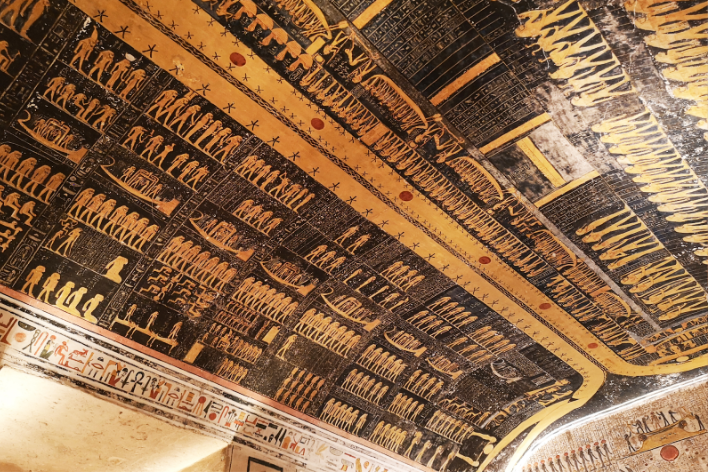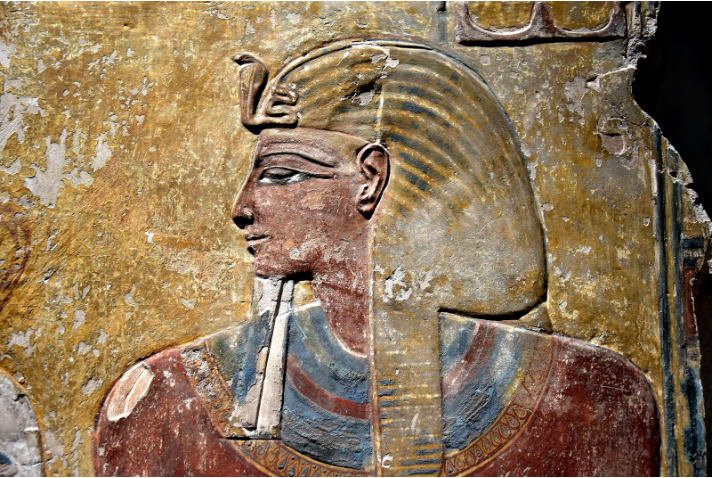While the Valley of the Kings in Luxor is famously known for Tutankhamun’s tomb, it harbors many more secrets waiting to be uncovered. This article delves into lesser-known tombs in the Valley, uncovering their significance and insights into ancient Egyptian burial customs and royal life. Additionally, these discoveries deepen our understanding of this ancient civilization’s unique beliefs and practices.
Unveiling Lesser-Known Tombs
The Valley of the Kings, west of the Nile near Luxor, served as the royal cemetery for New Kingdom Pharaohs (1550–1070 BCE). Besides Tutankhamun’s famous tomb, several other burial sites reveal insights into ancient Egypt’s history and culture.
Tomb of Ramses VI (KV9):

Constructed for Ramses VI of the 20th Dynasty, this richly decorated tomb features elaborate wall paintings. Additionally, its inscriptions relate to afterlife beliefs, providing valuable insights into the funerary practices of the time.
Tomb of Seti I (KV17):

The tomb of Seti I, father of Ramses II, is famous for its detailed murals depicting the afterlife journey. Furthermore, this masterpiece offers key insights into New Kingdom religious practices and artistry.
Tomb of Queen Tausret (KV14):

The burial site of Queen Tausret, the last Pharaoh of the 19th Dynasty, features unique inscriptions and a layout that reflects the role of female rulers and the transition of power during the late New Kingdom.
Unraveling the Mysteries
The Valley of the Kings holds many untold stories and ongoing mysteries. Some tombs, like KV55, have intrigued researchers due to their ambiguous origins and contents. KV55, with its incomplete decorations and uncertain occupants, has sparked debates about its connection to the Amarna period and Akhenaten.

Modern technology, such as ground-penetrating radar, reveals unknown chambers and passages in the Valley. As a result, it hints at hidden secrets waiting to be uncovered.
Conservation and Future Exploration
Preserving the Valley of the Kings is vital for Egypt’s cultural heritage. Protective measures and advanced technologies help safeguard the tombs from damage and decay.
Both the Egyptian government and international organizations are working on strategies to protect these ancient sites. Advanced imaging and archaeological techniques aid in studying and preserving the tombs, ensuring their importance for future generations.
Why They Matter
The lesser-known tombs in the Valley of the Kings uncover details of ancient burial practices and royal life. Each tomb offers insights into the beliefs, artistry, and politics of the era.
These tombs enrich our knowledge of the New Kingdom’s rulers and their preparations for the afterlife. They continue to captivate scholars and visitors, reflecting the enduring fascination with Egypt’s ancient civilization.
To delve deeper into the wonders of ancient Egypt, including these remarkable tombs, consider exploring our tailored tours. At Odysseys Voyage, we specialize in unique travel experiences that showcase the rich history and culture of Egypt. Whether you seek adventure, knowledge, or both, we invite you to discover more with us. Visit our exciting tour packages and start your journey today!




